
| Small Green-banded Blue (one synonym : Danis macleayi Druce & Bethune-Baker, 1893) POLYOMMATINI, POLYOMMATINAE, LYCAENIDAE, PAPILIONOIDEA | (donherbisonevans@yahoo.com) and Stella Crossley |
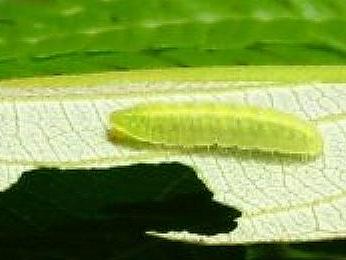
(Photo: courtesy of Bob Miller and Ian Hill)

| Small Green-banded Blue (one synonym : Danis macleayi Druce & Bethune-Baker, 1893) POLYOMMATINI, POLYOMMATINAE, LYCAENIDAE, PAPILIONOIDEA | (donherbisonevans@yahoo.com) and Stella Crossley |

(Photo: courtesy of Bob Miller and Ian Hill)
This Caterpillar is pale green and hairy, with a pale edged dark dorsal band.
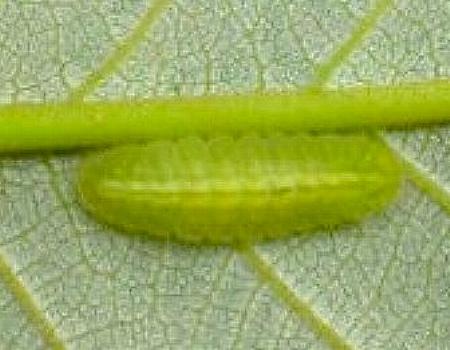
It lives on the underside of a leaf of its food plant, which plants from RHAMNACEAE, including :
In captivity: the caterpillars are antagonistic to each other, and inclined to be cannabalistic.
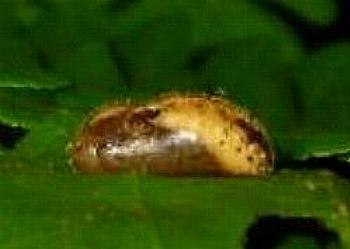
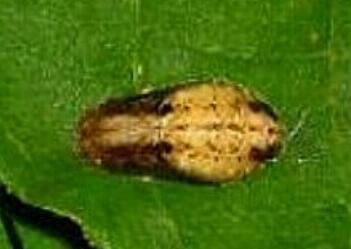
The pupa is cream with brown markings and sparse hairs. Its length is about 1 cm. It is attached to the underside of a foodplant leaf.
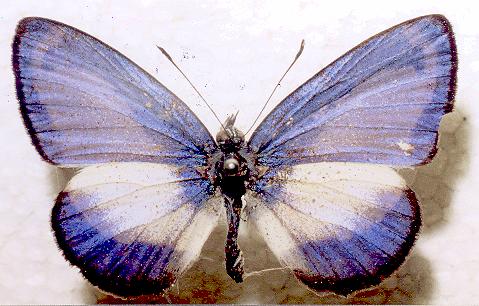
The male adults are blue on top with a large white patch on each hindwing. The females are black with a large white patch on each wing.
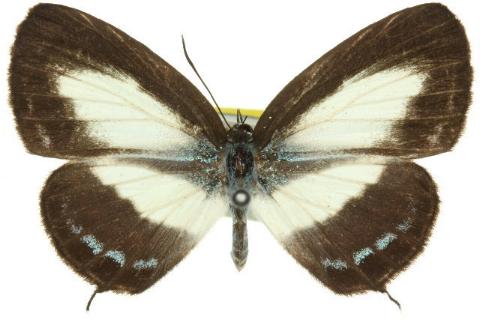
Underneath, both sexes are white with a black border. Along the underside of the costa of each forewing there is an iridescent pale green stripe. Along the margin of the underside of each hindwing there is a row of black spots each ringed in pale iridescent green. The adults have a wingspan of about 3 cms.
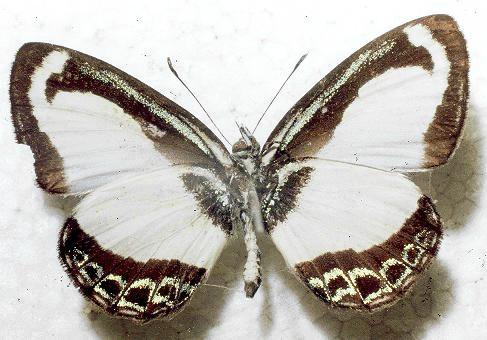
The eggs are white, round flattened and rough. The are laid typically in ones or twos by a vein under a leaf of a young foodplant.
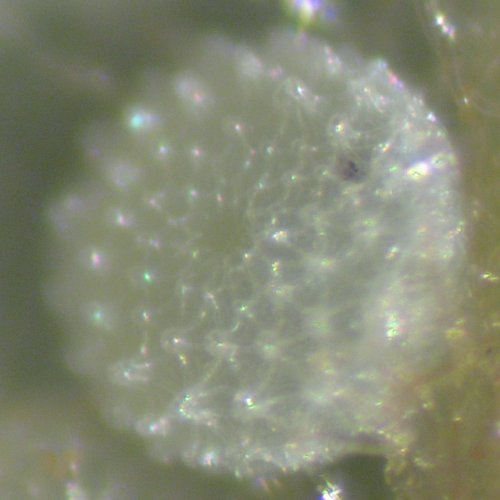
The species occurs in
and over the eastern coastal areas of Australia including
as one of three subspecies that have been recognised in Australia, although their standing is controversial :

Further reading :
Michael F. Braby,
Butterflies of Australia,
CSIRO Publishing, Melbourne 2000, vol. 2, pp. 794-795.
Baron Cajetan Felder & Rudolf Felder,
Lepidopterologische Fragmente,
Wiener Entomologische Monatschrift,
Band 4, Part 8 (1860), p. 245, No. 102.
Buck Richardson,
Tropical Queensland Wildlife from Dusk to Dawn Science and Art,
LeapFrogOz, Kuranda, 2015, p. 230.
Frank Jordan & Helen Schwencke,
Create More Butterflies : a guide to 48 butterflies and their host-plants
Earthling Enterprises, Brisbane, 2005, pp. 41, 59.
 caterpillar |  butterflies |  Lepidoptera |  moths |  caterpillar |
(updated 2 June 2008, 20 December 2024)